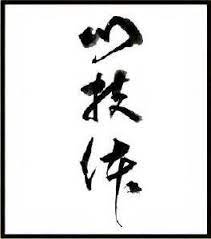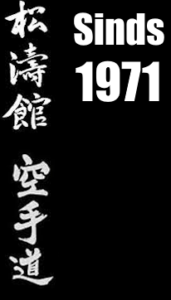The Balanced Developement of Karate Prectitioners
The Holistic Approach and the Shin Gi Tai Philosophy

Introduction
As athletes, we strive for success and improvement in various areas. However, true growth extends beyond physical performance alone. Balanced development encompasses not only the physical aspect but also the mental and emotional well-being, as well as the technical skills of the athlete. In this article, we will explore the holistic approach and the Shin Gi Tai philosophy from Japan as a guide for the balanced development of athletes.
The Holistic Approach The holistic approach emphasizes the understanding that an individual forms a whole in which each aspect is interconnected. The body, mind, and emotions work together and continually influence each other. An imbalanced development in any of these areas can lead to suboptimal performance and well-being.
The concept of holism is supported by numerous scientific studies. One example is a study published in the Journal of Clinical Sport Psychology, which demonstrated the close connection between athletes’ mental well-being and their physical performance. The importance of the holistic approach is also recognized in psychology, where therapists work to understand the whole person, including their emotions and thoughts, in order to achieve better well-being.
Shin Gi Tai The Shin Gi Tai philosophy, originating from Japanese martial arts, is an approach that emphasizes the unity of body, mind, and spirit. “Shin” represents the mind and mental aspect, “Gi” represents technical skills, and “Tai” represents the body and physical strength. Similar to a mushroom, where the fragile roots, stem, and cap support and reinforce each other, athletes should strive for a balanced development of these three aspects.
Shin: Mental Development Mental development is crucial for athletes as it influences their ability to focus, cope with pressure and setbacks, and set goals. Here are some exercises to develop mental strength:
- Mindfulness meditation: Daily meditation helps athletes increase their attention and awareness, reduce stress, and build mental resilience.
- Visualization: Athletes can imagine themselves achieving successful performances, building confidence, focus, and motivation.
- Positive self-talk: Encourage athletes to use positive affirmations to redirect negative thoughts and build self-confidence.
Gi: Physical Development Physical development encompasses strength, endurance, flexibility, and coordination. Having a strong and healthy body is essential for optimal sports performance. Here are some exercises for physical development:
- Strength training: Implement a balanced strength training program with exercises such as weightlifting, bodyweight exercises, and functional training.
- Cardiovascular training: Athletes should engage in cardiovascular activities like running, swimming, or cycling to increase endurance.
- Flexibility and mobility: Yoga, stretching, and mobility exercises are important to improve the athlete’s flexibility and mobility.
Tai: Technical Development Technical development refers to the skills and techniques within the specific sports discipline. It involves refining movements, understanding tactics, and developing instinctive reactions. Here are some exercises for technical development:
- Targeted training: Work on specific techniques and tactics relevant to the athlete’s sports discipline.
- Deliberate practice: Practice consciously and purposefully, paying attention to detail, repetition, and continuous improvement.
- Feedback and coaching: Seek regular feedback from qualified coaches and instructors to refine and improve technical skills.
Conclusion The concept of Shin Gi Tai offers a holistic approach to athlete development, balancing the mental, physical, and technical aspects. Through mental exercises, physical training, and technical focus, athletes can elevate their skills to a higher level. It is important to find a balance between these areas of development and integrate them harmoniously in training.
As athletes, we strive to be like the mushroom with strong roots, stem, and cap. By working on our mental resilience, physical capabilities, and technical skills, we can achieve balanced development and realize our full potential as athletes.
The Role of the Instructor
An instructor plays a crucial role in guiding athletes toward balanced development in mental and emotional aspects, physical and bodily aspects, and technical aspects. Here are some key aspects for an instructor to consider:
Awareness and guidance: An instructor should be aware of the holistic approach and the Shin Gi Tai philosophy and apply these principles in teaching. They should not only teach technical skills but also pay attention to the mental and emotional aspects of the sport.
Mental training: Implementing mental training techniques such as visualization, breathing exercises, and mindfulness can help athletes improve their mental resilience and focus. This assists them in dealing with stress, concentration issues, and achieving flow.
Emotional support: An instructor should create a safe and supportive environment where athletes can express and manage their emotions. Understanding and encouraging emotional intelligence can help athletes better cope with challenges and setbacks.
Individual attention: Each athlete is unique and has different needs. An instructor should provide individual attention to each athlete, guiding them based on their specific strengths and weaknesses.
Conclusion Balanced development of athletes in mental and emotional aspects, physical and bodily aspects, and technical aspects is essential for their success and well-being. The holistic approach and the Shin Gi Tai philosophy provide valuable insights and guidelines to achieve this balance. As an instructor, it is important to be aware of these approaches and take on the role of mentor and guide, paying attention to all three areas of development. By supporting athletes in their growth at every level, you can help them reach their full potential and guide them toward balanced development like a mushroom with strong roots, stem, and cap.
Sources:
- Journal of Clinical Sport Psychology: https://journals.humankinetics.com/view/journals/jcsp/jcsp-overview.xml
- Waddington, I. (2019). Coaching and Mentoring in the Sports Context. In P. W. Clough & S. Sutherland (Eds.), The SAGE Handbook of Sport and Exercise Psychology (2nd ed., pp. 126-142). Sage Publications.
- Biswas-Diener, R., & Dean, B. (2007). Positive psychology coaching. John Wiley & Sons.
- “The Essence of Budo: A Practitioner’s Guide to Understanding the Japanese Martial Ways” by Dave Lowry. This book provides insights into the philosophies and principles of various Japanese martial arts, including Shin Gi Tai.
- “Shin Gi Tai: Karate Training for Body, Mind, and Spirit” by Michael Clarke. This book specifically focuses on understanding Shin Gi Tai in the context of karate and explores how the body, mind, and techniques are interconnected.
- “The Unfettered Mind: Writings of the Zen Master to the Sword Master” by Takuan Soho. While this book focuses on the relationship between Zen and swordsmanship, it contains concepts and insights relevant to Shin Gi Tai. It is important to note that the interpretation and application of Shin Gi Tai may vary slightly among different Japanese martial arts and practitioners. Therefore, it is valuable to consult sources that specifically focus on the martial art you are interested in. It is always a good idea to seek reputable teachers, books, and academic articles on the subject to gain a deeper understanding of Shin Gi Tai and how it applies within the context of Japanese martial arts.




